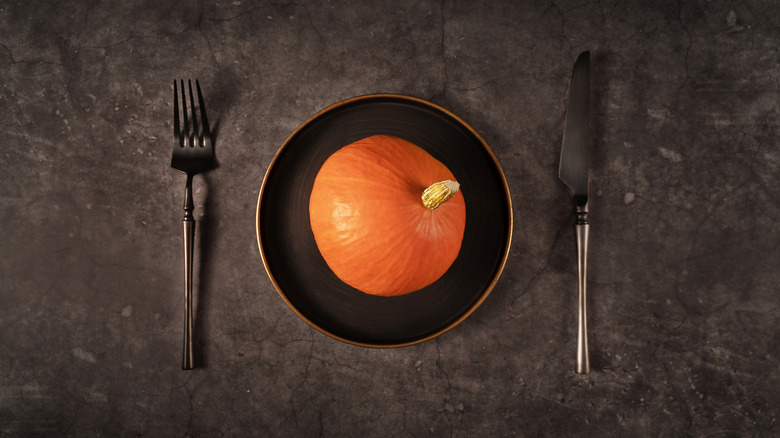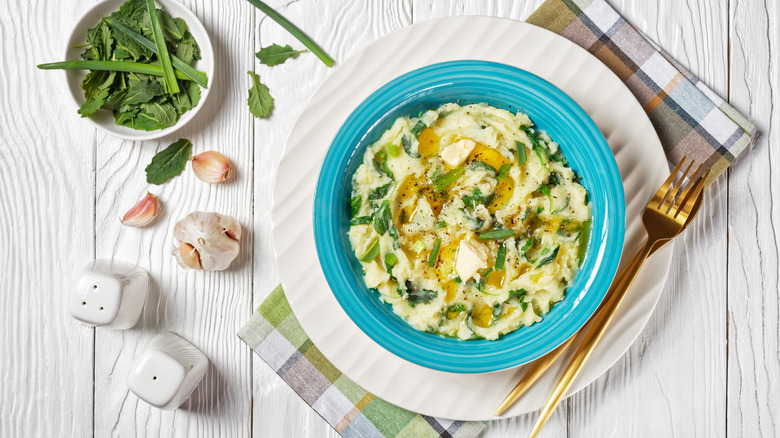The Simple Irish Dish Traditionally Eaten On Halloween
Halloween is such a widely celebrated holiday in modern times it can be easy to overlook its ancient origins. According to IrishCentral, Halloween is the present-day version of Samhain, an Irish holiday thought to have roots in Pagan rituals. The event took place every October 31st and was believed to be a time when the veil between our world and the "Otherworld" was the thinnest. Thus, fairies and spirits could easily visit the land of mortals, and Samhain's observers used food to help entice their loved ones' homes.
How did this old-timey practice transform into what we now know as Halloween? Per History, the Roman Empire took over most of the territory belonging to the Celts (ancestors of the Irish) in the first century A.D. That's how a pair of Roman holidays — coincidentally honoring the dead and sweet treats — began bleeding into Samhain. Later, All Saints' Day and All Souls' Day were brought to Celtic lands, further making late October/early November a time of multicultural celebration. Then, a game of telephone (or whatever you called it back then) occurred, and All Saints' Day begot All Hallows Eve begot Halloween.
There's one last historical tidbit you need to know to set the stage for one of the most classic Halloween dishes of yore. As explained by the Smithsonian, potatoes came to Ireland by the 18th century. Yet another import from a different culture, those spuds would lay the foundations for a simple yet undeniably Halloween-esque delight.
Colcannon is a Halloween staple
Halloween (known as Oíche Shamhna in Ireland) soon saw potatoes incorporated into it (via IrishCentral). Combining taters with butter, milk, spring onions, and cabbage or kale, the Irish made a dish that's called colcannon. Regional variations exist, explaining why you might see ingredients such as bacon, chives, corned beef, or ham added in. Like many Irish dishes, such as champ, this one sees potatoes get mashed, giving it a sense of comfort and making it easy to mix in ingredients. So, it's no wonder people added colcannon to their macabre feasts.
The Irish made colcannon somewhat supernatural in nature, also, by hiding in it trinkets with supposed fortune-telling abilities, per Smithsonian. If someone found a coin in their colcannon, it indicated they would earn wealth over the next year, while a rag predicted quite the opposite. A stick foretold that one would come to harm! A thimble meant a bachelor or bachelorette would stay single, according to IrishCentral, while a ring announced a wedding. How very spooky, indeed.
Halloween is a holiday produced from the synthesis of cultures and their cuisines, and that tradition continues today. As one reader wrote to Irish America, "Halloween is an international festival if you choose to celebrate it. It does not require ownership. That is one trait of the Irish, to celebrate and share a good time with everyone." If you wish to participate and make iconic Halloween food, check out Tasting Table's own traditional Irish colcannon recipe.

